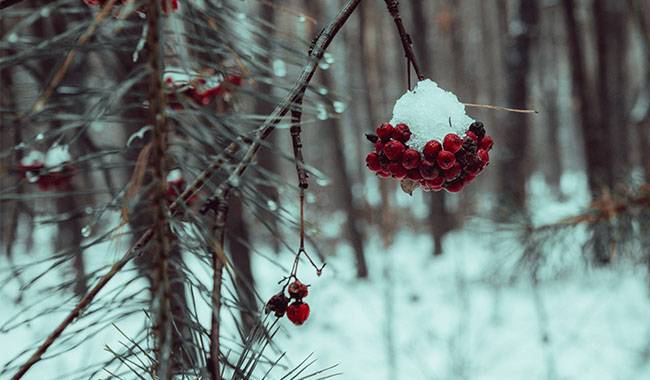
Woody plants and shrubs are not only subject to freezing during extreme winters, provocative thaws during cold periods, and returning frosts in spring and even in early summer, but also to rodents, which in gardens and berry fields are rats and rabbits, what to do to protect trees?
By their nature, these creatures are afraid and you will be surprised if you find a hare in your garden in summer. More often than not a mouse can be seen, but often closer to the evening, when it simply blends in with the soil. In general, they try to stay away from human settlements.
HOW MUCH DAMAGE CAN RODENTS DO?
The damage from rodents to garden crops is enormous: If bushes can recover from their roots even when strongly affected by rodents, trees either have to be restored by grafting or mashing, or they are lost completely. After all, trees actually consist of two parts – the scion and the rootstock. On the scion of a grafted species, rodents gnaw the bark on the rings and survive only on the rootstock, a barbaric act that gives you no benefit (I’m referring to the yield of various fruits).
Young plants often do not recover because the gnawing can also be very deep. A hare can gnaw a fairly thick branch in half, while a rat can gnaw parts of the bark into rings.
Naturally, after such damage, there can be no normal sap movement and it will be disrupted forever. It was therefore necessary to prevent this trouble, and gardeners, in an effort to keep mice and hares out of their trees and shrubs, came up with many interesting ways to really protect winter gardens through years of trial and error.
TYPES OF PROTECTION THAT WORK FOR RODENTS
There are only two methods of rodent protection: mechanical methods, which are absolutely safe and quite effective against nature, and chemical protection, which is much less pleasant for the environment but in some ways even more reliable.
On the trunk or trunk of a tree in a mechanical way, if it is a question about the bush, it is necessary to tie something up, cover it, close it in some way so that the rodent can see the “prey” and can not get it.
The first variant is a branch of coniferous spruce. It can be used to bind the bases and trunks of bushes. And all of them are large and recently planted. This method has one obvious advantage – it is cheap. This method is quite effective: the needles are thorny, and if you tie the trunk and the trunk, rodents can not get to them. But there are some disadvantages – forest protection laws provide for serious fines for various thefts. But you can always find brush branches in clearings, and there are plenty of them now.
Plastic nets are probably the most popular rodent-proofing measure. Of course, it is quite difficult to install plastic netting on the trunks of bushes, but it reliably protects the trees. The main thing is not to install plastic netting in a hurry or to save money.
It is better to install it after the first snowfall, 2-2.7inch (5-7 cm) when it will settle down – at this time it can be installed, taking not a short piece, but to the height of the first fork of the tree. Disadvantages of plastic netting: it perfectly protects from mice, but not from hares.
Hares may stand on their hind legs and gnaw on the wood above the netting. Of course, in this case, the shoots above the graft will be affected, but again, most of the shoots, sometimes all of them, will be destroyed and the tree will have to get rid of them again.
Bituminous waterproofing and roofing felt are good materials. You can also wrap them around the trunks of trees and shrubs, applying several layers as densely as possible, making sure to bury them a little deeper in the soil, and tying them down with string.
But this material has a big disadvantage – when it thaws, it gets very hot, condensation forms under it, the bark may start to melt or even rot, and the wood gets hot too. This is bad, because if in winter suddenly there is such weather, and the roof and the roof membrane must be removed (agreed that it is quite tedious).
It is not uncommon for gardeners to simply tamp down the snow around shrubs and trees as densely as possible from time to time. This is a good deterrent for the rats, as they do not run across the surface of the snow or dig their way through the compacted layer of snow. Admittedly, the opposite is true for the hare, which is an open road – run up and gnaw at it.
The easiest and safest way to prevent rodents is to treat plants with a mixture of clay and cow manure mixed in the same proportions. Thus, you should have a consistency similar to that of liquid garden beer or sour cream, except that such consistency will stick and quickly harden on the trunk rather than runoff. For greater results, you’ll need to add about a tablespoon of carbolic acid to 10 liters of the mixture and make sure to mix everything thoroughly.
This solution is just right for applying to the trunks of raspberries, blackberries, young trees, and old trees. It can be applied higher up so that even a large hare, standing on its hind legs, cannot reach the branches. Admittedly, the height of the ice and snow layer will work against the hare, in which case it is important to loosen the snow more by breaking up the ice.
Professionals say that a mixture consisting of four kilograms of clay, the same amount of fresh cowpeas, 90 grams of cresolipid, and 85 grams of organophosphorus compound (concentrated type) will protect the garden 100%. The main thing is to mix it well and dilute it with water to a state close to the above – that is kneading in your hands garden varnish (which is better) or sour cream (which is slightly worse). Then you can safely apply to the stumps until the skeleton branches, or you can touch them.
For a few years, the plots were not only full of mice, but it was as if the mice attacked us and wanted to invade. In this case, simply use poisonous bait. Usually, they are prepared independently and for this purpose use rye or wheat bread and grains of various crops, which are put into the poison beforehand.
But this method has a huge drawback: it is very dangerous for birds and pets. What to do? – Make an interesting mouse bait: after treating the cereals or bread with a solution of any rat poison, put these poisoned ingredients in a tube, well, made of roofing felt. All pets and birds, except rats, will not get such “food”. Of course, it is more environmentally friendly to use traps, mice traps, and snares, but all of them sink into piles of snow in winter.

GARDEN PROTECTION AGAINST HARES
from the sight of these delightful creatures, but how much trouble there can be when you realize that the garden is simply being destroyed, as well as the amount of money and labor spent.
A one-two punch can be taken from hares by installing the most realistic, sturdy, and tallest fences around the grounds so that they can neither burrow under nor jump over the fence. In order to make the fence “work”, the installation should dig the iron sheet into the soil 12inch (30cm) to prevent complete sinking, and the height of the fence should be at least two meters because sometimes a layer of snow can fall 60inch (1.5m).
In addition, when a lot of snowfalls, or do it regularly, you can sprinkle wormwood stems around the plot. It has been noted that hares cannot tolerate this odor, and hunters often use it to literally lure hares to where they need to be. In addition to spreading mugwort, it can be wrapped around trees and shrubs or planted near them in the fall.
Hares cannot tolerate the pungent odor, so those with large families can leave a piece of grease, wait until it turns sour, and hang it near a tree or bush on the site. Sometimes the strongly sour lard is rubbed on the trunk of a tree so that the hares won’t even touch it.
Cod liver oil and naphthalene, which are also rejected by hares, will not eat the bark of this foul-smelling plant. Ardent gardeners even mix fat and naphthalene in a ratio of about seven to one and use it to coat stems and buds.
If you are an avid chemist, we can suggest that you buy the biological preparation at the store. In the fall, you can use it on your entire garden. Its scent is said to neutralize the sensitive receptors of wild rabbits and they won’t even smell the edible odor.
But back to the lover of all things environmentally friendly. Wood ash, if you have plenty of it, can do double duty: and enrich the soil with potassium and keep the hares away. Peat flakes will stop them, especially when mixed with kerosene (one liter of peat flakes per bucket).
Rustling and strange noises …. Shy like rabbits, so they sometimes talk about this or that. But don’t treat gardeners with the timidity of hares? For example, there are now many cheap Chinese wind chimes that you can hang on trees. The wind will blow them and the hares will get spooked.
Although, to be honest, I personally don’t really believe in this method of scaring hares. If anyone has had success scaring away hares with these methods, please write in the comments.
The nicest way. What could be nicer than a cat, especially one that is moderately well-fed, moderately affectionate, and that not only eats and sleeps but also enjoys running and hunting in the snow? Take, for example, the Maine Coon, my favorite breed.
They are hardly smaller than hares, as they are quite large and have quite developed hunting instincts. Maybe they don’t kill hares, but they will drive them away and exterminate all the mice on the property. And they will also clear their neighbors’ territories, as the scope of their adventures is sometimes very large.
IF THE TREE HAS BEEN DAMAGED
If the tree is damaged and the gnawing is not in the circle, you need to use the simplest decoction of linden bark. In the spring just collect the linden bark, grind it well, about half a bucket of linden bark, pour ice water over it, boil it for half an hour or a little more and strain it.
Thus you should get a kissel-like quality with which to garnish the chews (if they are not all). On top of the coated portion, it’s best to put a plain wrapper over it and pull it well, but don’t tie it up. As the tree grows, it will tear right off and there will be no pulling. About two months of temporary bandages cannot be removed, then the wound should overgrow.
A more modern method I have recently learned is the “polyethylene bandage”. Everything here is simple, the nibble is wrapped in polyethylene film. What are the advantages? This film transmits all the sunlight and stimulates healing as if it were a protective wound, and all the processes occurring in the wound can be clearly seen through the film.
In case of gnawing in a circle, it is better to perform bridge grafting and transfer the tree, regraft it or uproot it and plant a new tree in this place.
That’s all there is to it, if anyone knows of other methods please write in the comments, it would be very interesting.







